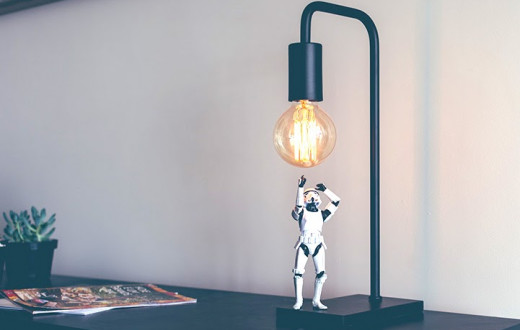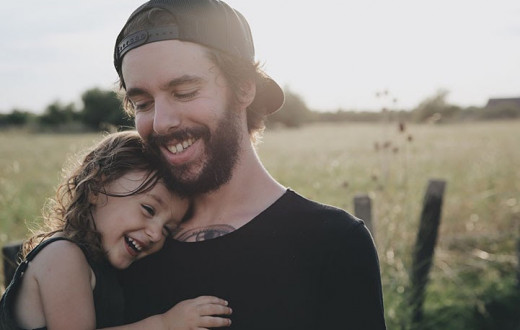By Krystal Childrey
Did you know the simple act of breathing can help reduce anxiety? Try these 7 quick breathing exercises to quiet your anxious mind now.

Have you ever been told to "take a deep breath" when overwhelmed with stress or anxiety? While you may not have given it much thought, this age-old phrase poses an interesting question: can the simple act of changing the breath provide relief from anxious thoughts?
Although Eastern medicine has recognized the power of the breath for centuries, Western science is finally catching up. Researchers at Stanford University have discovered a handful of brain cells connecting the breath to states of mind, emphasizing how slow breathing plays a role in reducing anxiety and calming the mind.
The difference between stress and anxiety
Stress and anxiety are closely related; however, there is a distinct difference between the two. To explain the difference between stress and anxiety, imagine you have an upcoming interview for your dream job.
As the interview gets closer, you notice an increased heart rate, sweaty palms, and butterflies in your stomach. Your brain perceives the interview as a threat, causing the sympathetic nervous system to release stress hormones, leading to a "fight-or-flight" response. However, as soon as the interview is over and the perceived threat no longer exists, your symptoms subside, and your thoughts return to normal. This short-term reaction to a particular challenge is known as stress.
On the other hand, anxiety is your body's reaction to stress, and it manifests as excessive fear or worry that is out of proportion with the perceived threat. You may worry about the upcoming interview weeks before it's scheduled or immediately jump to the worst-case scenario. Even after the interview is over, you can't stop obsessing over your interview answers, and you continue to worry about how the interviewer perceived you.
Complications resulting from anxiety
Occasional anxiety is normal, but it can quickly spiral out of control, interfering with daily functioning. It can lead to deeply ingrained thoughts that you aren't good enough or aren't capable of accomplishing specific goals. You may even avoid people and situations that are beneficial to you to escape uncomfortable thoughts and feelings.
If anxiety is left untreated, an anxiety disorder may develop over time. Common anxiety disorders include:
Generalized anxiety disorder (GAD): an excessive and persistent worry over everyday events
Social anxiety disorder: an uncontrollable fear of being judged or embarrassed in social settings
Panic disorder: sudden feelings of doom that strike without warning, causing panic attacks that can last between a few minutes and an hour
An anxiety disorder increases your risk of developing health complications in the future, such as high blood pressure, heart disease, and diabetes. Instead of relying on medication to manage your symptoms, using natural techniques, such as controlled breathing, may reduce your symptoms.
Calm anxiety by using deep breathing
The next time you experience an anxiety attack take a moment to observe your breath. You'll notice shallow, chest breathing resulting from the "fight-or-flight" response. Hyperventilation can occur if you continue to breathe rapidly into the chest, resulting in chest pains, dizziness, and muscle tension, which further complicate your anxiety symptoms.
By controlling the breath pattern and practicing deep breathing exercises, you send signals to the brain to calm down. Deep breathing using the belly activates the parasympathetic nervous system, creating a relaxation response. It can reverse the symptoms of anxiety, reducing blood pressure, decreasing heart rate, and increasing mindfulness.
Research into the Art of Living's SKY Breath Meditation program found that 73% of participants suffering from generalized anxiety disorder (GAD) were able to reduce their anxiety symptoms significantly through breathing, and 41% were able to achieve remission in only four weeks.
7 breathing exercises for anxiety relief
Breathing exercises only require a few minutes out of your day, and there are many options to choose from, so you're sure to find one that fits your needs. Here are seven easy breathing exercises you can implement into your daily routine to reduce your anxious thoughts.
1. Diaphragmatic Breathing
The diaphragm is the dome-shaped muscle used in respiration, located right below the lungs. Diaphragmatic breathing, also known as belly breathing or abdominal breathing, strengthens this muscle, and this deep breathing technique fills the entire lungs with air.
Bring one hand to the belly and place the other hand on the chest
Take 3-5 seconds to inhale through the nose, feeling the belly rise as you breathe in. The hand on the chest should not move
Exhale through the nose for 3-5 seconds, feeling the belly lower back to its original position
Continue this breathing exercise for 5 minutes a day
2. Box Breathing
Box breathing, also known as square breathing, is a simple breathing exercise that involves inhalation, exhalation, and breath retention. The Navy Seals use this technique to reduce stress and anxiety during combat.
Inhale through the nose, expanding the belly to a count of 4
At the top of the inhale, hold the breath for a count of 4
Release the breath, exhaling through the nose for a count of 4
At the bottom of the exhale, hold the breath to a count of 4
Repeat for 5-10 cycles
3. Coherent Breathing
The goal of coherent breathing is to reduce the breathing cycle to only five breaths per minute. This breathing pattern reduces heart rate and blood pressure, calming the nervous system.
Inhale through the nose, expanding the belly to a count of 5
Without pausing at the top of the inhale, immediately begin the exhale to a count of 6
Repeat at least five times to complete a full minute cycle
If you find it difficult to inhale or exhale for this length of time, you can start at a 3-count and slowly work your way up
4. Straw Breath
As the name suggests, this exercise involves exhaling through a straw to reduce feelings of anxiety and panic. The straw breathing exercise is also known as pursed lips breathing, so if you don't have a straw, you can purse your lips on the exhale instead.
If you have a straw, make sure to have it on hand for the exercise
Inhale gently through the nose, filling up the abdomen to a count of 4
At the top of the inhale, take a slight pause to place the straw in your mouth. Alternatively, you can purse your lips like you have a straw in your mouth
Exhale gently and slowly through the straw to a count of 6
At the bottom of the exhale, pause and remove the straw
Repeat this exercise for 5 minutes a day
5. Yogic Breath
Yogic breath is also known as the three-part breath, and it is an excellent grounding technique that fills up the entire lungs. The three parts of the breath refer to the belly, ribcage, and upper chest.
Sit in an upright position with your spine straight
Start by placing your hand on your belly, slowly inhale and exhale through the nose into the abdomen, and feel it rise and fall with the breath
Next, place your hand on your ribcage and slowly inhale and exhale through the nose into the ribcage, noticing the ribs expand with air
Finally, place your hand on your upper chest, slowly inhale and exhale through the nose into the chest cavity, feeling it rise and fall with the breath
Repeat breathing into each area separately until you are comfortable with each technique
On the next inhale, fill up the belly first, continue inhaling into the ribcage, and finally, the chest. Pause for a moment at the top of the inhale
On the exhale, reverse the flow, releasing the breath first from the upper chest, then the ribcage, and lastly, the belly
Continue this breathing exercise for 5-10 cycles
6. Victory Breath
Victory breath is known as Ujjayi Breath in Sanskrit. It is also referred to as ocean breath since the sound made by constricting the throat resembles waves crashing against the shore.
Sit in an upright position with your spine straight and hands resting in your lap
Keeping the mouth closed, inhale through the nose to a count of 4, slightly restricting airflow to the back of the throat on the inhale. If you do this correctly, you'll notice a sound resembling waves or light snoring
At the top of the inhale, pause for a second before continuing with the exhale
Continue to keep the throat constricted and slowly exhale to a count of 6. Pause before beginning the inhale again
Repeat this exercise for 5-10 rounds
7. Alternate Nostril Breathing
Also known as Nadi Shodhana in Sanskrit, alternate nostril breathing involves inhaling and exhaling through only one nostril at a time to balance out the flow of energy. This breathing technique quiets the mind and emotions.
Sit in a comfortable, upright position with your spine straight
Bring your right hand in front of your face, placing your index and middle fingers between the eyebrows for stabilization. During the exercise, you will plug the left or right nostril using the thumb and ring finger
Close your eyes and plug the right nostril with your thumb
Inhale slowly through the left nostril to a count of 4
At the top of the inhale, take a slight pause, plugging the left nostril with your ring finger and releasing the thumb from the right nostril
Exhale slowly through the right nostril to a count of 4, slightly pausing at the bottom of the exhale
Inhale slowly to a count of 4 through the right nostril, pausing at the top of the inhale
Plug the right nostril with the thumb, and release the ring finger from the left nostril
Exhale slowly to a count of 4 through the left nostril, pausing at the bottom of the exhale
Repeat this exercise for at least five cycles
Enjoy this guided video for a taste of breathwork.
What comes after taking a deep breath?
After practicing these eight breathing techniques individually, take a moment to jot down your experience with them, and identify your favorites. You can stack your favorite breathing techniques on top of one another for more profound relaxation and relief from anxious thoughts.
Need additional guidance or ready to take your practice to the next level? Sign up for our free breath and meditation session, and learn more about the SKY Breath Meditation proven to significantly reduce anxiety and change millions of lives around the world.
Krystal Childrey is a health and wellness copywriter located in Seattle, WA. She is a registered yoga teacher, mental health advocate, and member of the National Alliance on Mental Illness (NAMI). When she’s not writing or practicing yoga, she enjoys day hiking across the Pacific Northwest. You can find her on LinkedIn.



























